HMT Elk
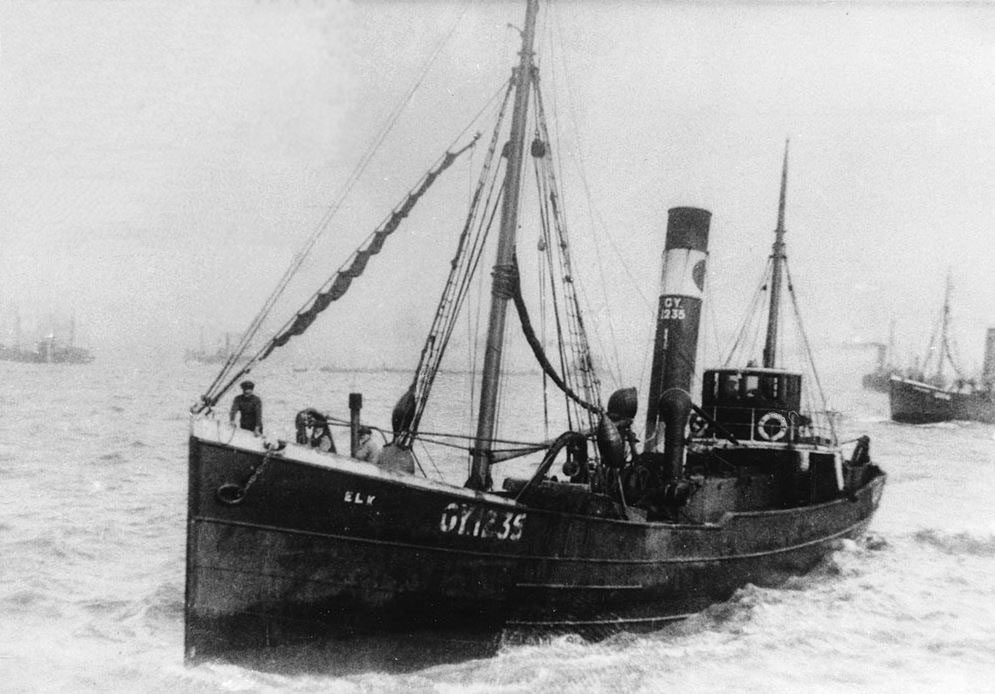
The Elk was originally designed as a Steam Trawler, by Cook, Welton & Gemmell, of Beverley in Yorkshire, she was laid down in 1902 for the Thomas E. Fisher & Henry Morris Co., Ltd and was destined to spend her life fishing the prolific Cod grounds off Iceland for her new owners. There was no other expectation of her than she be fit for purpose and commercially effective, her lines had been honed over generations of sailing trawlers that had gone before her. Elk would be a side trawl, meaning her nets would be operated Port or Starboard, rather than dragged from her stern, allowing her catch to be landed and processed on the broader and longer forward deck, without using complicated arrangements to move the haul for’ard in heavy seas for processing and stowage. Icelandic trawling required sometimes 6 or 8 week long fishing trips from her home port of Grimsby, to get the Elk to the Cod grounds off Isafjordour or Seyoisfjordour and back, and for that, her Amos & Smith 3 cylinder 62 Hp steam engine would drive her well at around 9 knots until she cast her trawls
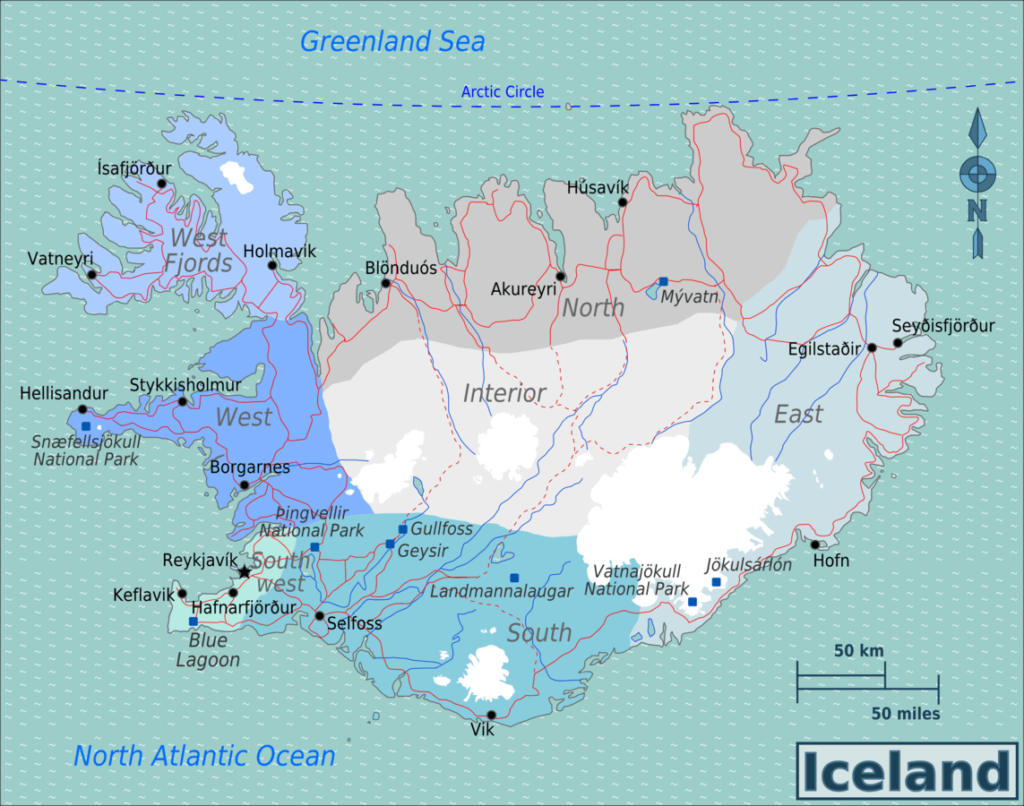
Why would such tiny vessels make such an arduous journey, after all it is 1229 miles, one way, to the West Coast of Iceland, at 9 knots that’s a 6 day trip before any fishing even starts! SigfÚs JÓnsson tells us in his piece (“The Icelandic fisheries in the pre-mechanization Era, C. 1800–1905: Spatial and economic implications of growth” Online Resource: https:// www.tandfonline.com/doi/ pdf/ 10.1080/ 03585522. 1983. 10408006 Accessed 26/11/2021) “….The first steam trawlers were built in Britain and France around 1880. These proved an immediate success as the fishing operation became much less subject to wind and tide. The speed and flexibility of vessels increased drastically, catches grew proportionally, landings became more dependable and many new sea areas became intensively fished” so, from even an Icelandic perspective, the fishing of Cod from as far away as England and Wales made economic sense, even if it did come as a high risk activity. What is more, the boats designed to travel the North Sea and Arctic Oceans were very well built……and they needed to be!
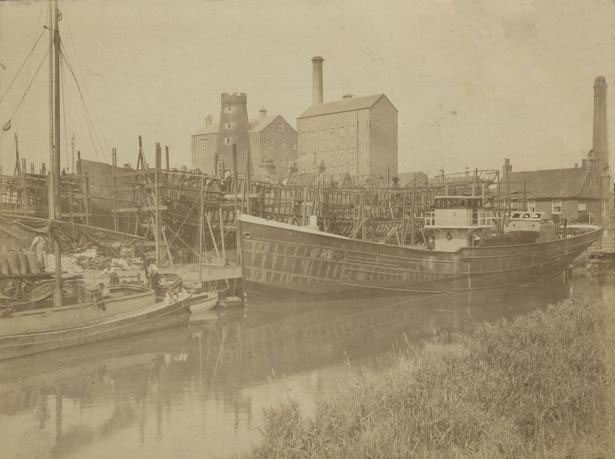
The Elk had been made for the relatively new company of Thomas E. Fisher & Henry Morris Co Ltd, in the Grovehill Shipyard on the River Hull in Beverley. The firm of Cook, Welton & Gemmell was founded in 1883 on South Bridge Road, on the Humber bank in Hull, by founding partners William James Cook, Charles Keen Welton and William Gemmell

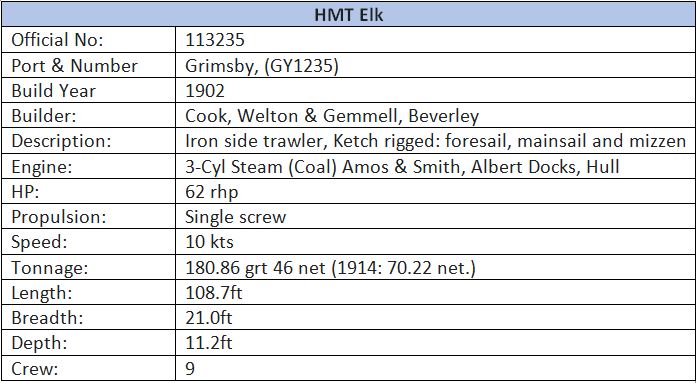

In 1901–1902 the business was moved up-river, nine miles, to a new yard at Grovehill, (acquired from Cochrane, Hamilton & Cooper). Now Hull might not be a place you would normally expect shipbuilding to be carried out, the river Hull seems an unlikely watercourse for anything but the smallest of vessels perhaps, however, in typical and ingenious manner, large ships, significantly larger than our small vessel the Elk, were indeed launched, sideways on, into the River Hull from the early 1800’s on up until as late as 1962 in fact

The river was dredged to facilitate the deeper draught hulls of the larger vessels Cook, Walton & Gemmell intended on building, photos of the time show the exercise to have been very successful, most vessels from 1902 were larger than the sail-ships that had gone before
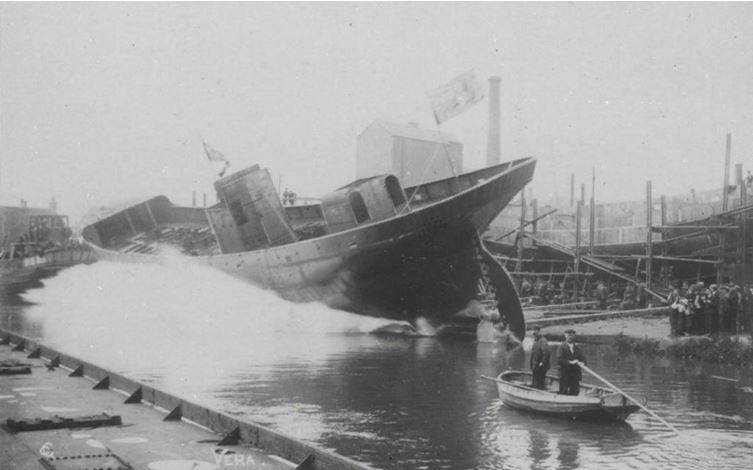
Thomas E. Fisher & Henry Morris Co Ltd had been started around 1893 and, as the name implies, was a partnership between the main Trawler Owner, Thomas Fisher, and a local Trawler Captain Henry Morris. It would be Henry Morris that captained the Elk out of Grimsby, and his crew would be responsible for the catch, its cleaning and stowage and its landing back in Grimsby. The Elk was a traditional if innovative trawler known locally as “Ketch” rigged, meaning it still had the ability to deploy and use sails when or “if” the right moment called for it
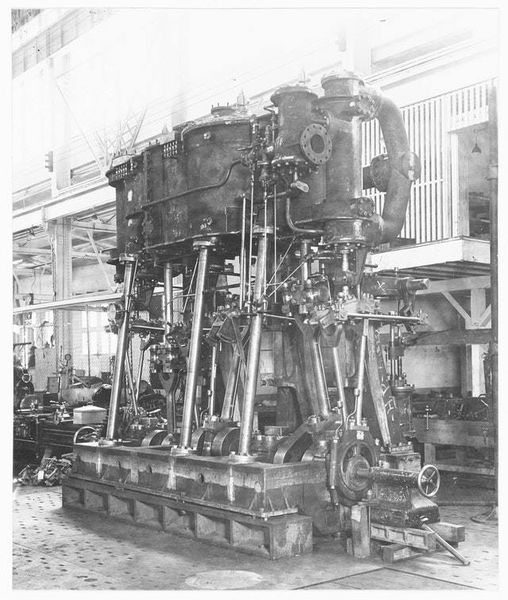
It would be interesting to talk to skippers of the time to hear if the sails were ever deployed on these trawlers, they seem a throwback rather than anything really practical, although they likely wouldn’t have been fitted unless there was actual use envisaged, even occasional, a Yorkshireman would not waste the expense of rigging and sails unless there was good reason! Perhaps the truth of it is the period was a transition, sail giving way, reluctantly, to steam and perhaps the “learning curve” included judging the right amount of coal to carry for long journeys (with few ports of call once Scotland was to stern), or the expectation of occasional “issues” with the new steam technology, either way in 1902 the Elk was fitted with a sail to rearward and two on her main mast for’ard

The GA Drawings above show the arrangement & layout used on Elk, at hull 329, Elk was only a couple of years after Bardolph & Caliban and, as Cook, Walton & Gemmell were progressive rather than “cutting edge”, the assumption (born out by the hull of Elk and the few but reasonably clear photos of her), is that she was very similar to both those earlier trawlers. Elk was a “sidewinder” where her trawling gear was concerned, dragging her trawl from Port or Starboard side by means of a boom & tackle arrangement controlled from the centre of the deck just in front of the funnel where the steam winches were situated
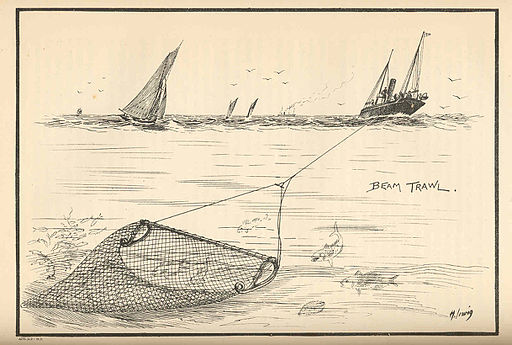
The Elk would make many dangerous journeys for her owners, between her launch in 1902 and the onset of war in 1914, she proved herself a rugged and, it would seem, profitable little ship. Her owner in 1914 being registered as Morris & Fisher Ltd, a change of name of the original company but retaining the same shipping manager, Thomas E Fisher. It would be the rugged construction of the Elk and her companions, fishing the brutal waters of Iceland, which attracted her to the British Admiralty, as the declaration of war between Austro-Hungary and Serbia plunged the countries of Europe and the Levant into a mass conflagration, one that would eventually be declared a World War and be commemorated in history as World War One

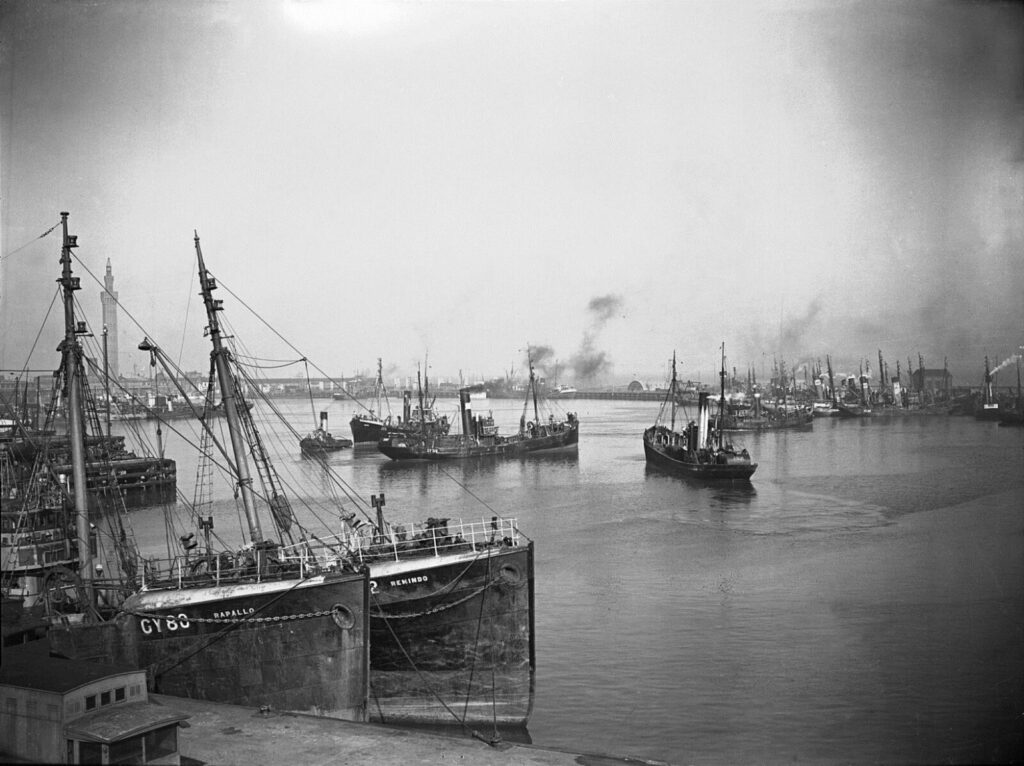
The decision taken by the Admiralty, on the declaration of war in 1914, to requisition the Elk & many of the Grimsby & Milford trawler fleet vessels, had been taken as a result of a far earlier recommendation by Admiral Lord Charles Beresford, made in 1907 (“Hullwebs History of Hull, Trawlers at War-World War One” Online Resource: https://www.hullwebs.co.uk/content/l-20c/conflict/ww1/trawlers/default.htm Accessed: 27/11/2021) “….Beresford recommended that steam trawlers be used in the role of minesweepers in the event of war. This would free up warships for other, more appropriate, duties”. Beresford clearly understood the trawlers were more than ideal, they were small craft and maneuverable, they were used to often working in close proximity to each other when catching tightly massed shoals of fish, they were also used to towing, something perhaps the British Navy were not! Minesweeping was a similar activity, and unremarkably both trawling and minesweeping were high risk activities, the men of Hull, Grimsby and the fishing ports of the UK were no strangers to imminent and often fatal danger……..
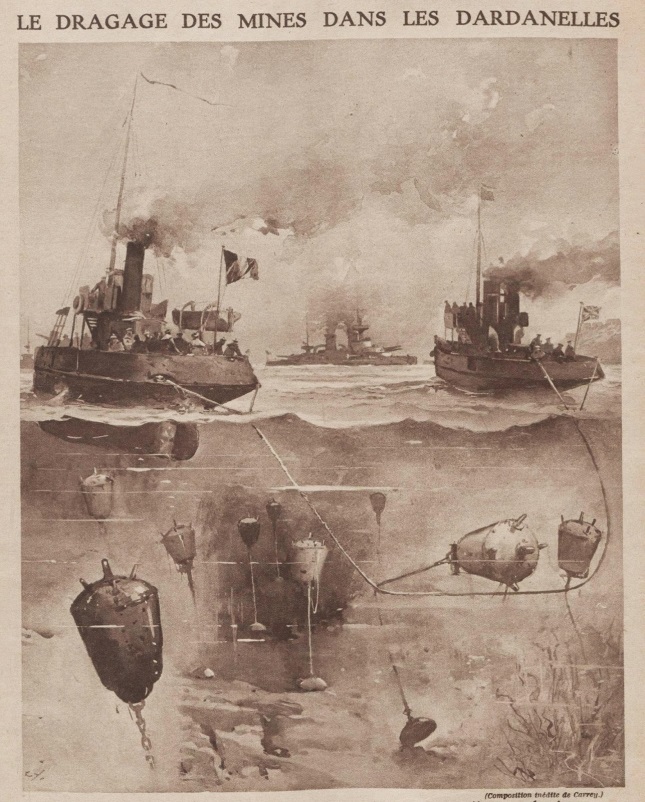
Dr Katherine Storr writes (“FISHING PORTS AND COASTAL TOWNS, War-Time” P4, Para2. Online Resource: https://www.heritagesouthholland.co.uk/wp-content/uploads/2013/05/AOS-D-0166-7_-Fishing.pdf Accessed: 27/11/2021) “On Tuesday, 4 August 1914, fishing craft returning to Grimsby found light cruisers, submarines and treacherous mines laid in the North Sea by Britain and Germany, so the fish dock quickly became clogged. Most trawlers were immediately commandeered for Admiralty service and within a few hours some were engaged in minesweeping” It is not hard to believe that the Trawlers of England, Wales & Scotland were put to use almost immediately, the Germans had developed new mine technology (see the piece on the Adriatic wreck Baron Gautsch) and it was proving very effective. The world’s battleship fleets had been engaged in a race for supremacy since the British invention of the “Dreadnought” class, and although Britain had the largest Dreadnought fleet, under Admiral John (Jackie) Fischer, berthed at Scapa Flow in the Orkneys, by 1914 the Kaiser’s “Hochseeflotte” (High Seas Fleet), under Admiral Alfred Von Tirpitz, was a very close (too close) second place

The first action of the German high seas fleet must have galvanized the trawlermen of Grimsby, it was very close to home….. Rear Amiral Franz Von Hipper’s “Scouting Group” tried to entice the British out of Scapa Flow by carrying out shelling of Scarborough, Hartlepool and Whitby on 15–16 December 1914
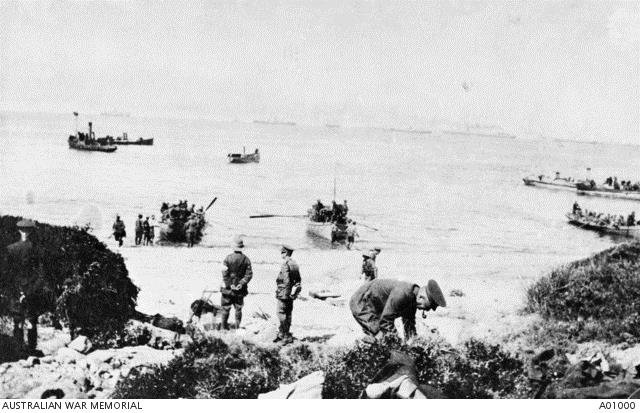
The Elk would be in the thick of WWI very quickly, she and many of her Grimsby fleet were needed for 1st sea Lord of the Admiralty, Winston Churchill’s, Gallipoli Campaign. Churchill had submitted a plan to the War Cabinet in late 1914 (as the land campaign in Europe became mired in trench warfare), to force a fleet of pre-Dreadnought battleships up the Bospherous, to bombard Constantinople (Istanbul), in order to prevent the Ottoman Turks joining the Germans in mainland Europe, (the Turks having refused to join the Allies against the Austro-Hungarians at the outbreak of war) and potentially to threaten Germany from the Southern flank of the conflict
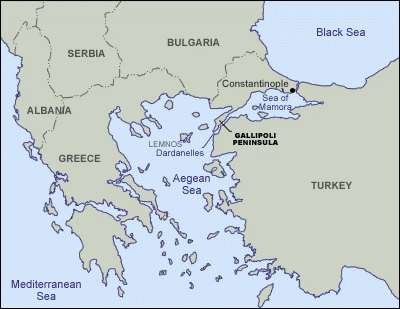
The Elk sailed to Gallipoli, (a distance of 3686 nautical miles, expected to take 10 to 14 days at 9 knots) along with her trawler sister-ship fleets to take up various duties, they were, on arrival, and from the outset in mortal danger, undertaking the towing of “Lighters” the large rowing boats that carried troops ashore
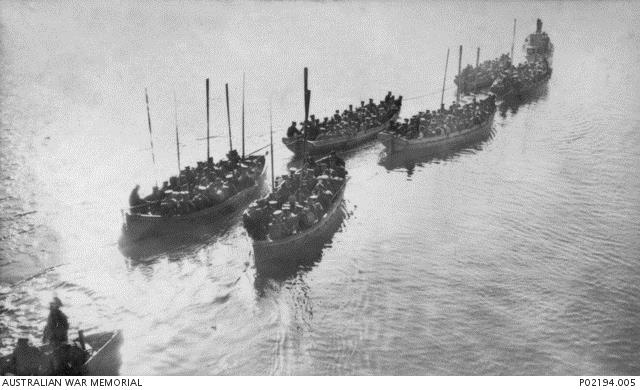
They carried out transfers between ships and, perhaps most dangerous of all, minesweeping duties to keep the Allied fleet of British and French warships free to manœuvre. Churchill’s plans were thwarted when the Turks resistance proved far more effective than expected, the fleet did not manage to break through to Constantinople, the Ottoman shore based artillery managing to hold off several ferocious and determined assaults by the combined fleet
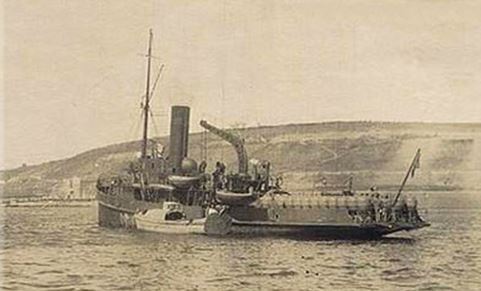
Indeed, in a devastating twist of irony, the Turks managed to outwit the Allies, having noticed the manner of attacks by the battleships, on several occasions, and, using guile and stunning alacrity, they laid a mine run of 20 mines across a stretch of the Dardanelles (Erin Keui Bay). The Allies had used the bay, repeatedly, to turn about (180’ about face) the well laid mines took out 3 battleships in one morning, the French Battleship Bouvet, the British Battleship HMS Irresistible and the British Battleship HMS Ocean, they seriously damaged 3 more (French ships Gaulois & Suffren and British ship HMS Inflexible), although there is modern day contention the Bouvet “may” have been hit by shore based Ottoman artillery
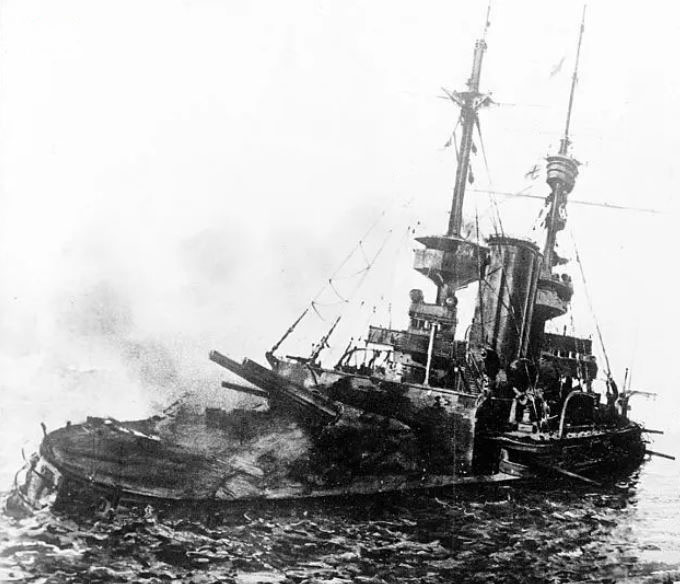
If ever there was a visceral demonstration of “Hubris” then this was it, from that point on the Dardanelles would not see another significant Battleship attack, and the allied fleet withdrew to the bays at Suvla, Gaba Tepe (Anzac Beach), Tekke Burnu & Hellespoint. The battle became land based on the headlands at Anzac Beach and Hellespoint, and quickly bogged down in exactly the manner of Ypres, Verdun and Mons. The trawlers of Grimsby, Hull and Milford would now be in a constant state of extreme danger, the Ottoman forces occupied the high ground with clear observation points across all of the allied lines of offence, although, at first undermanned, it did not take them long to grind the allies to a halt without them getting far off the beaches and headlands. The waters in front of the beaches were easily observed and it is a miracle that more ships were not sunk between the landing and the evacuation of troops in January of 1916 (New Zealand History “The Gallipoli campaign, The Evacuation” P6, Para 4. Online Resource: https:// nzhistory.govt.nz /war/the-gallipoli-campaign/the-end-of-the-campaign Accessed: 28/11/2021) “The evacuation of Anzac began on 15 December, and 36,000 troops were shipped out over four nights. Support troops and reserves went first, then the fighting units were thinned out until only 10,000 remained on 19 December. They moved out that night in a coordinated withdrawal from the front-line trenches. At 4.10 a.m. on the 20th, the last men left Anzac Cove. Suvla was evacuated the same night, but British and French forces remained at Helles until 8-9 January 1916. Then the campaign was over”
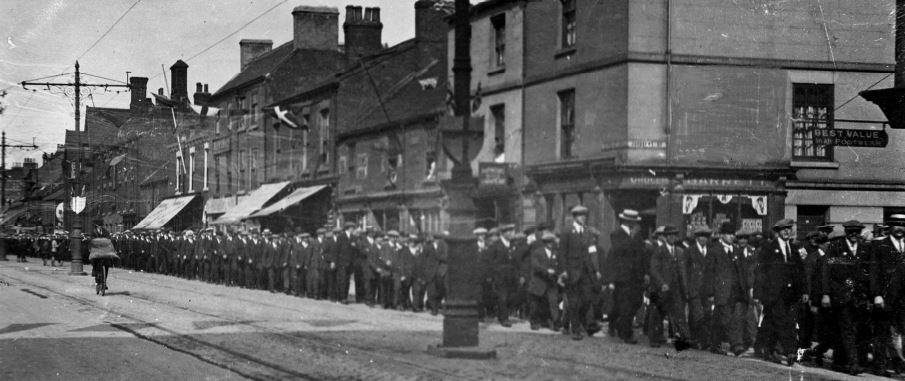
Those who survived Gallipoli did not necessarily survive the war, when the trawlers came back from the Dardanelles the war raged on in Europe for another 3 years, and there was still mortal danger around the shores of Britain and France, the U Boat was a threat and mines were constantly being laid in nighttime forays by the Germans around our coasts, “….By the end of the war, of Grimsby’s 700 steam trawlers, 600 were requisitioned, 433 became fighting units, and some 60 were lost with 519 men, leaving 313 widows and 480 orphans. Altogether 5,875 Grimsby men joined the Navy or the auxiliary services on patrol and minesweeping duties” (“FISHING PORTS AND COASTAL TOWNS, War-Time” P4, Para2. Online Resource: https://www.heritagesouthholland.co.uk/wp-content/uploads/2013/05/AOS-D-0166-7_-Fishing.pdf Accessed: 27/11/2021) Remarkably, the Elk survived her minesweeping duties and brought her crew back to Grimsby, fishing again (initially for the Admiralty, for the Fishing Reserve, flying the White Ensign but fishing under Navy control, but then returned to civilian ownership), for almost another decade in what was a more peaceful time, but would very soon become known as the “Between War” years
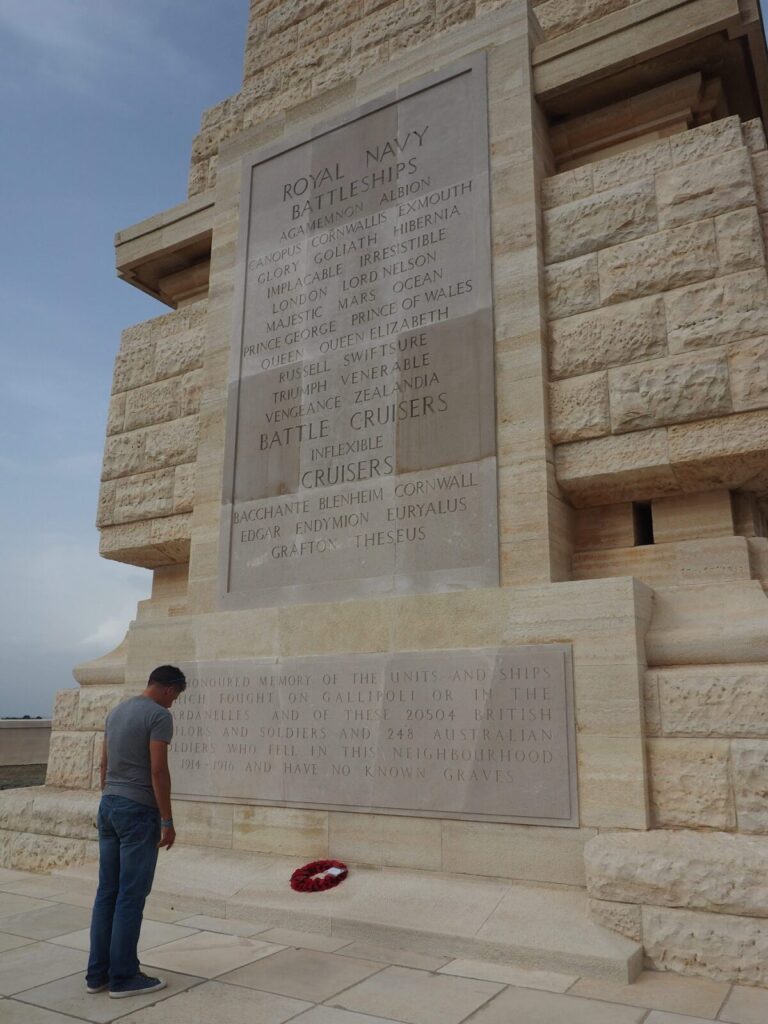
By the time the Elk was sold by the Victoria Steam Fishing Company, to a Mr Oliver Curphey of Milford in Wales, becoming registered as the M36 14th Nov 1929, there were rumblings from Germany of a new threat rising. A month later, in December of 1929 the German Nation held a referendum, in it the National Socialist German Worker’s Party (or Nazi’s for short), proposed a new law against the “Enslavement of the German People”, an attempt to formally renounce the Treaty of Versailles (which compelled reparations on the German economy in repayment for the damages caused by World War I)……. it would only be a little less than 4 years later that Adolf Hitler would become “Reichschancellor” of Germany and galvanize the German Nation, once more, against the rest of Europe and eventually most of the globe. In 1931, the Elk was again sold on, this time to move down to the South Coast, on the 21st of Jun 1932 she joined her new owner, William Henry Edward Nichols, in dock at Plymouth to fish the waters of Plymouth Sound

“Once more unto the breach, dear friends, once more”……Shakespeare’s King Henry V could not have put it more aptly, the Anschluss, or “annexation” of Austria in 1938 was nothing less than a declaration of war, but the British Prime Minister, Neville Chamberlain, as so often happens, sought to appease Hitler and the German Nation. It would not be until Hitler scornfully stormed into Poland, 01st of September of 1939, that the world realised appeasement of an enemy just delays your potential destruction….it doesn’t…ever…. stop it (look up the Aztec Ruler Montezuma, the Egyptian Queen Cleopatra, or the Indian Nations of America to name just a few). Far better to let Shakespeare and King Henry V again lead the way “In peace there’s nothing so becomes a man as modest stillness and humility, but when the blast of war blows in our ears, then imitate the action of the tiger, stiffen the sinews, summon up the blood, disguise fair nature with hard-favour’d rage”. Once the realisation dawned, and Chamberlains’ “peace in our time” was seen for what it was, it would fall to another veteran of war, Winston Churchill, (former disgraced and removed 1st Sea-Lord of the Admiralty, re-appointed to the same title by Chamberlain, only 2 days following the invasion of Poland, who by the 10th of May 1940, had succeeded Neville Chamberlain as Prime Minister)……. to ensure the days of appeasement were over

The war did not come entirely unexpectedly, as a result, the British War Office had begun making rudimentary preparations in advance, at least where the Royal Navy was concerned. In the spring of 1939 the Elk and 39 of her sisterships were requisitioned, once again, for service as minesweepers and converted from their trawls to Oropesa (Paravanes) or Dan laying duties. Nick Stanley wrote a comprehensive account of minesweeping in WWII which details the preparations: “These measures included the conversion of trawlers into minesweepers; a process the Admiralty had started in Spring 39. Training for the new crews took place at sea throughout that summer from bases such as Sheerness & Chatham. With war drawing closer, Sparrow’s Nest at Lowestoft was activated on 1 September 1939 for trawler conversions. War’s outbreak on 3rd September 1939 saw the RN’s sweeping force stand at 36 Fleet Sweepers & 40 Trawlers crewed by 2000 personnel” (Stanley, N. in “World War II, Minesweeping in the second world war”, Online Resource: https://www.vernonlink.uk/wwii Accessed 03/12/2021). Elk was fitted out with a single bow mounted gun for self defence (likely a 6 pounder), and given her pennant (Admiralty Trawler No 706, Pennant FY 4.24) and assigned for Dan laying
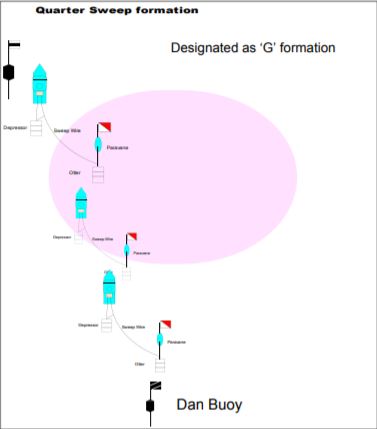
Dan-laying was the task allotted to indicate “swept” channels cleared of mines “Mark buoys, “Dan” type, are casks with an axial spar and counterweight, causing the spar to float vertically. The moorings consist of a 500-pound sinker and a 30-fathom mooring line of 1/2-inch flexible steel wire with eye and thimble spliced in each end. The buoy itself is equipped with a vertical bridle for mooring, with two thimble cringles, for attachment of the mooring lines for shoal and for deep water” (Editorial: “Mine Sweeping Manual United States Navy 1917” In Online Resource: https:// www.history.navy.mil/research/library/ online-reading-room/ title-list-alphabetically/ m/mine-sweeping-manual-1917.html Accessed 05/12/2021) and the practice hadn’t changed much since HMT Elk’s last Naval experiences. This would be just as dangerous as clearing itself, often at the very limits of swept lanes, which meant the Elk was exposed to the unswept side of the lane and any mines within it…….

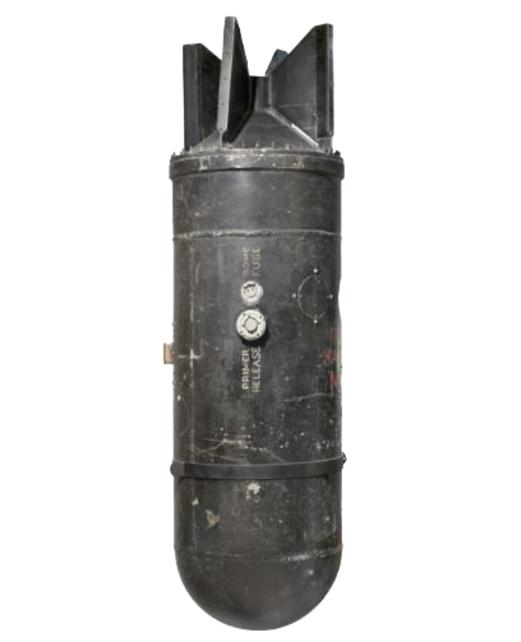
Elk took up her 1939 duties in WWII as she had in 1914, this time patrolling the approaches of Plymouth Sound, the area off Fort Bovisands and the Breakwater would have been very familiar from her fishing days. Elk patrolled with the Minelayers of the Royal Naval Patrol Service (RNPS) under a Captain J. S. Bush of the Royal Navy Reserve, not a regular Naval Captain but a usually seasoned seaman or recently retired Naval Officer. The threat this time even more potent than that in Gallipoli, the Germans were not only laying “contact” mines, the horned, acid circuit EMC mines, seen as cutting edge in 1914, but had added several new and dramatically improved versions such as the ground mine, an inappropriate name for a mine usually dropped by parachute from an aircraft, but named for its ability to sit on the sea floor
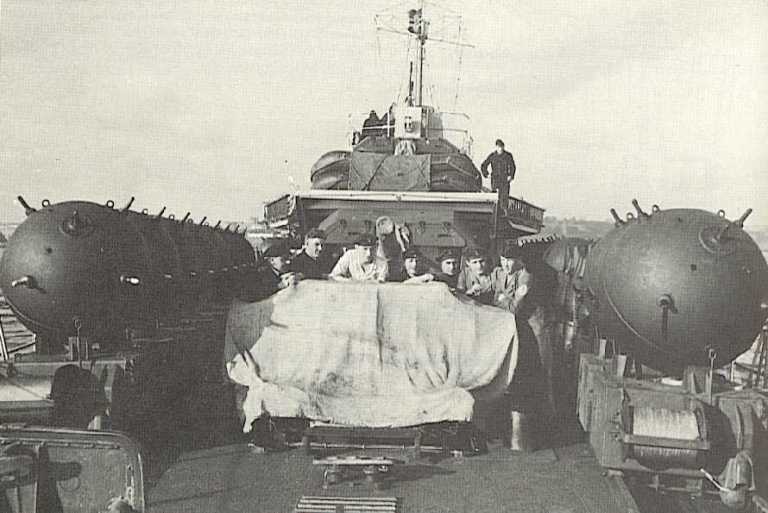
Now the threat included delayed mines, sitting in wait and counting a number of acoustic or magnetic contacts until the numbers crunched and the mine detonated, “…..mines in the Bristol Channel were observed detonating even though there had been no evidence of a ‘lay’. Suspicions over the introduction of arming delays & ship counts were then confirmed by Mine Destructor Ship HMS BUSHWOOD over a period of 4 days in Swansea Bay” (Stanley, N. in “World War II, Minesweeping in the second world war”, Online Resource: https://www.vernonlink.uk/wwii Accessed: 03/12/2021), then there were the acoustic mines that floated just below the surface, tethered to weighted “trucks” pushed off the back of their destroyers and E Boats, or free-floating dropped by aircraft or from boats, waiting for a ships engine signature noise and detonating as the noise reached a set level, and the most dangerous perhaps of them all, the electromagnetic mine
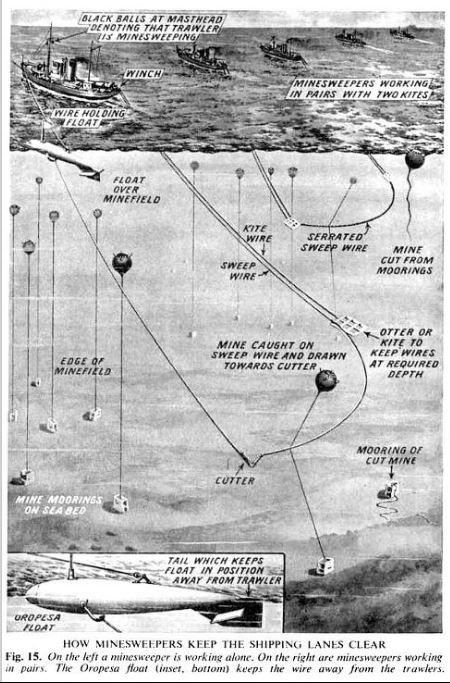
Although the Germans did not have a large store of these mines (developed from a British design) they were deadly, recognizing the magnetic disturbance a steel hulled ship gave off through the water and then detonating based on strength of signal, up close usually, which inevitably meant a devastating effect on any vessel caught out by one of these mines. The minelayers task being made even more difficult in mid-1940 “in May 1940, Germany had introduced bi-polarity into its magnetic mines, necessitating a second sweep and therefore a doubling of the influence sweepers’ workload. (Stanley, N. in “World War II, Minesweeping in the second world war”, Online Resource: https://www.vernonlink.uk/wwii Accessed: 03/12/2021). The only other mine to have a similar effect being the Oyster mine, set off by the bow-wave pressure of a ship, a deadly threat, but again the Germans lacked the number or delivery methods to make these effective either
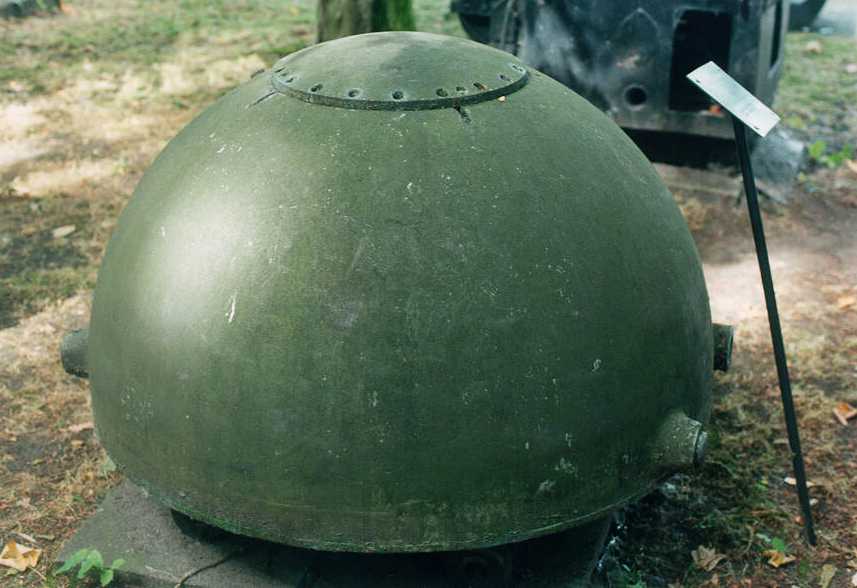
Mine warfare was a denial tactic “The mine’s primary effectiveness is in its psychological impact. Mines can be laid by any platform (ship, plane, or submarine), encountered anywhere, and they are virtually undetectable. Thus, prudent mariners avoid known or suspected minefields. More significantly, mines require more effort to clear than they do to deploy” (Editorial, “Weapons and Warfare, Naval Mine Warfare, WWII” Online Resource: https://weaponsandwarfare.com/2020/05/31/naval-mine-warfare-wwii/ Accessed 04/12/2021) the Germans keenly remembered the starvation caused to their population by Britain’s denial of their ability to trade by ship. The blockading of sea trade into Germany had a devastating effect on the morale of the German public, they learned from this, and used U Boats and Minefields in an attempt to starve the British in the same manner, in fact Churchill is on record as saying his biggest fear of the war was the U Boats and the effect they could have on the war effort
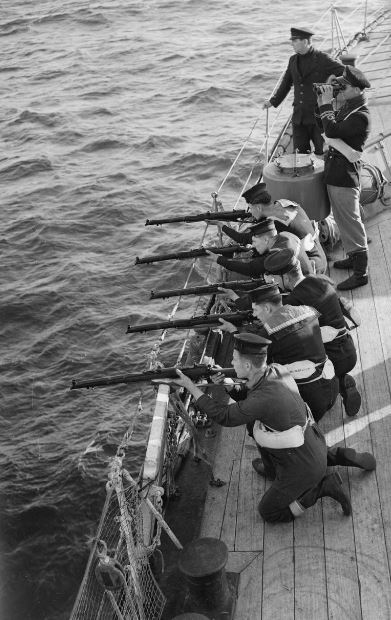
So HMT Elk is laying Dan’s for minesweepers in 1939 and Plymouth is a priority target for the Germans, as many mines as could be laid….. were, by U-Boat through deck chutes, by Heinkel’s parachuted in at night or rolled from the back of Destroyers or E and S Boats……whatever method, there were likely thousands deployed in the early stages of WWII, all were potentially deadly, and all were targeted at British and Allied shipping, and it was indiscriminate targeting, as happy to sink a freighter as a passenger liner or a fishing trawler without thought, without conscience……
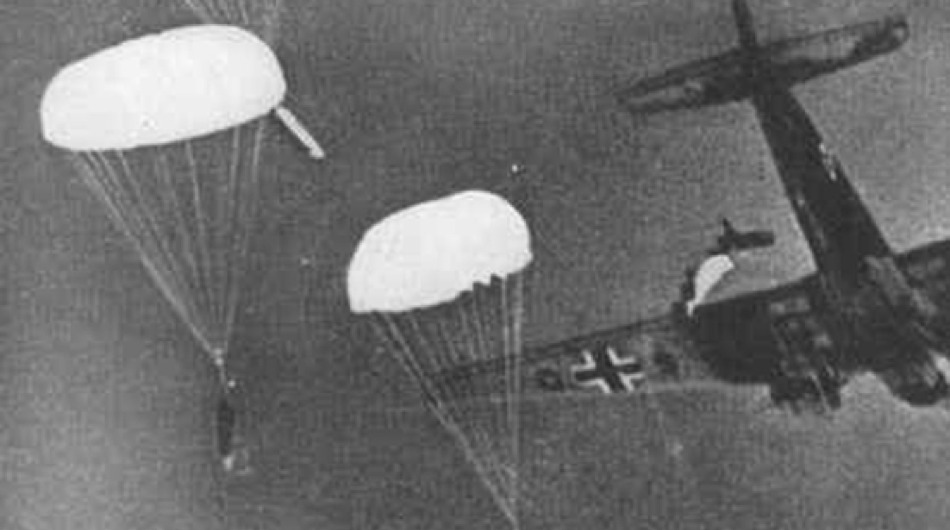
As 1940 begins things are going well for the Elk, in fact very well, in January two of her crew receive the Distinguished Service Cross, Lieutenant Charles Chapple RNVR and Petty Officer Bernard Donnelly RNR are awarded for “…unfailing courage, endurance and resources in H.M. Trawlers, Drifters and Minesweepers in their hard and perilous task of sweeping the seas clear of enemy mines, and combating submarines.”
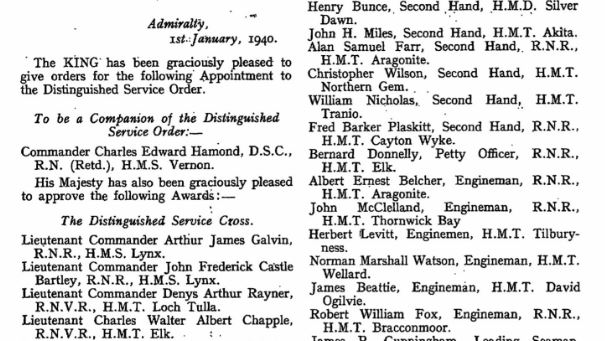

As 1940 marched on and activities got more and more intense, with an ever increasing German campaign to starve Britain into submission, more and more of the Elk’s peers were lost. In 1939 Allied shipping losses had totaled 47 (Source: “National Museums Liverpool, The Battle of the Atlantic, The cost of battle” https://www.liverpoolmuseums.org.uk/battle-of-atlantic/cost-of-battle Accessed: 04/12/2021), by the close of 1940 losses from all causes, bombings, torpedo, mines etc, in the “Battle for the Atlantic”, would stand at 349. Sometime in 1940 the Elk was assigned to experimental countermeasures testing, in response to the changing tactics of the Germans and the introduction of acoustic mines. It seems Elk was fitted with a type of steam powered apparatus, designed at the Royal Naval Engineering College, of Keyham in Plymouth
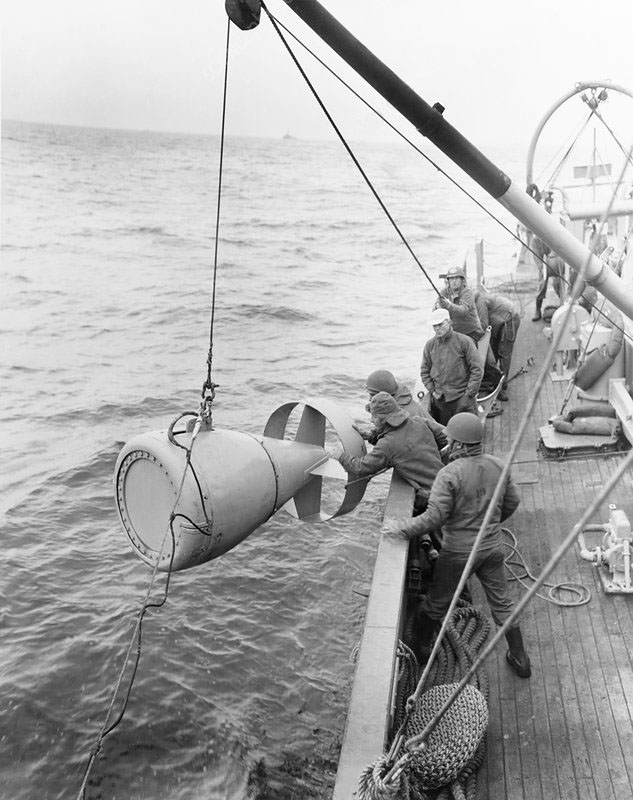
The photo above shows US Military personnel deploying an acoustic hammer box during acoustic mine sweeping operations off Wonsan, North Korea, in October 1950. The Korean War was fought from 25 June 1950 to 27 July 1953, with US forces supporting South Korea. The “acoustic hammer” is a device used to trigger acoustic mines. Here, it is being deployed from the minesweeper USS Mockingbird (AMS-27). Photographed on 23 October 1950.
I can find no mention of which specific type of acoustic equipment was fitted to the Elk, however an educated guess would be an early version of the “Kango” pneumatic hammer arrangement, “The next step was to mount the hammers inside an external box that was lowered into the water when in use — after a few sweepers had been sunk by acoustic mines while using internally mounted Kango hammers. The external hammers were usually hung over the side of the ship with a winch, though sometimes they were used over the bow of the ship” (Moffatt. I: “Mines and Minesweeping Techniques of WW2, Protective Measures & Minesweeping Techniques, Acoustic Minesweeping” Online Resource: http:// edinburghmodelboatclub.org.uk/ resources/ minesweepinginfofinal.pdf Accessed: 04/12/2012). Some of the trawlers mentioned as lost in the quoted piece were the Trawler Lord Inchcape, the Free French Navy Vessel Poulmic, and the Kingston Alalite, the Poulmic is another wreck written up in this blog, and it is believed she fell to an acoustic mine on the 7th November, just 20 days before HMT Elk would finally lose her gallant battle against the German Mines in Plymouth Sound…….
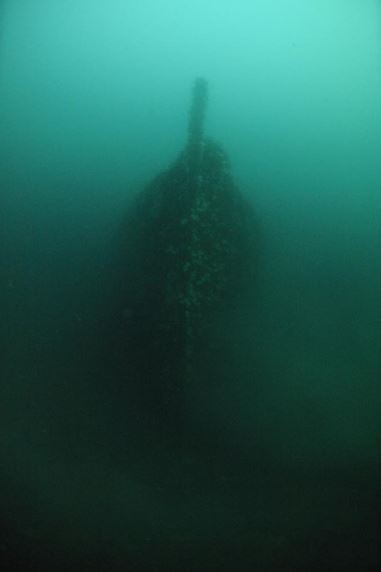
My first dive on the Elk came in October of 2000 and is the only wreck dive I know that fell between the pages of my log books, the Elk appears as the usual “starred” entry in my Green Navy Log, but is marked as “wreck book II” for the description……I never instigated a second, separate wreck book, I just began to include the descriptions in my Green Navy Log……ahh well, lessons learned! I recall the dive well as it was an FSAC trip and my buddy was Phill Sherratt, we had dived the Eddystone the day before and were back on the 7m RIB, out to the Elk, as first dive on the Saturday morning in decent conditions. The descent to Elk went well, she sits upright, her hull intact, the shot had landed and dragged, luckily Jason & Paul had been in first and secured the descent line after a bit of a line search for her. Phill and I dropped right on her stern and I was immediately struck by the abundance of fish on her, Elk was covered in Bib and Pouting, a shoal of what must have been close to a hundred fish hovered over her hull, quite the largest amount of fish I had ever seen in UK waters in what had been 10 years or more of UK dives to that date! I was also struck by the Stern on Elk, the exposed frame showing through remnants of her deck, mostly she was open at deck level, with her hull interior showing
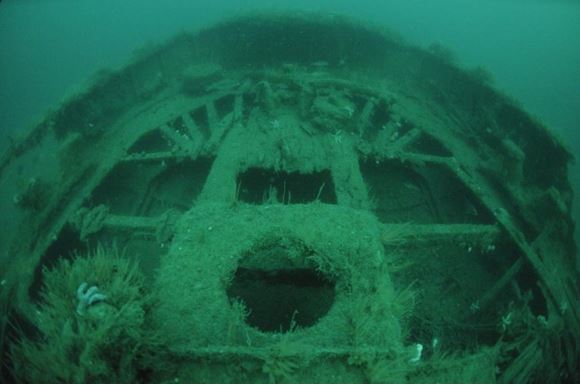
We carried on up her hull, taking in her steam boiler and engine on the way, although at the time I would not have known what type her engine was, coal or oil, I did know Elk was a steam trawler which fascinated me. I was also surprised to see the Bib hanging off the hull, when you look over the sides of the hull they are looking directly at you as if swimming vertically towards you, but they were almost motionless as if they had been stuck in place by some means, it was the first time I had seen fish hang in such a manner and it looked slightly surreal to me
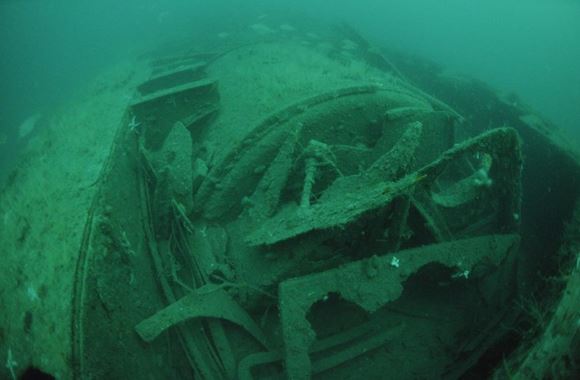
We got up towards the bow, and the remnants of what had been the bridge area, I was a bit confused, nothing was really identifiable. I did not know that most of the superstructure had been destroyed by fire following the mine explosion in 1940, and the layout of a 1902 trawler was not something I was very familiar with. To me the Elk was similar in looks to the Stanegarth, and I was kind of expecting a forward deck bridge, it seemed there was a larger deck for’ard than I’d seen before and, following the dive on Poulmic (another valiant WWII minesweeper/observer lost earlier in November of 1940), I was a little more confused than I would have admitted at the time…..Anyhow, we swam around her again following the hull in pretty respectable viz, somewhere around 10m or so, and then ascended to our deco stops, after what had been not only a great dive but also an intriguing one! It would be 6 years before I got another chance to dive the Elk and things had moved on a little for me, I had a new job which involved a lot of travel and had closed Deep Blue Diving, and, sadly, Fenton SAC, but the selling of the dive kits, and various equipment associated with both, had allowed me to take my own diving somewhere I had not expected it to go
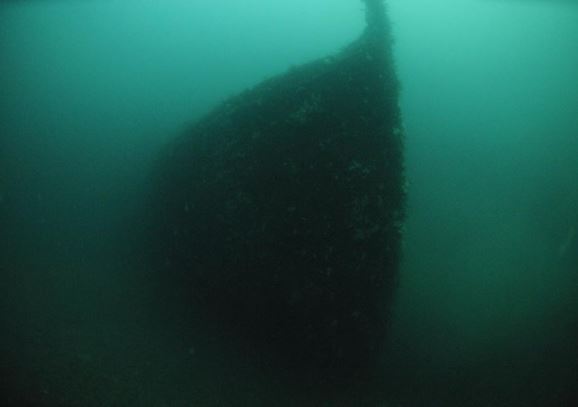
I bought an AP Valves “Inspiration” re-breather and had signed up for training with Richie Stevens, of Deep Blue Diving in Plymouth, now there is plenty of time to discuss the co-incidence (or such) of the naming of both businesses, let’s just move on for the moment shall we….. On the course I was delighted to find we would get another shot at the Elk, and my Navy log records: “21/06/2006 HMS ELK- Plymouth Sound – 30m Rebreather dive, descent was OK, wreck was fine with the usual Bib & Pollack & one Cuckoo Wrasse, Viz OK at 3m or so & silty but OK. Dive was simple getting used to the Inspiration ascent was OK but last 6m was a nightmare fighting the solenoid – the loop & the suit…Buddy Mike” I recall the Elk sitting just as I had left her, in almost exactly the same condition, although the remains of the for’ard deck had rotted more, unsurprisingly. There were not as many fish on her either, but the viz, as described, was not anywhere near as good as we had back in 2000, but that’s UK diving for you, the Elk was still a lovely dive, even if the distractions of a new toy got the better of me in the narrative!
If you want to see and hear those who undertook both the laying of mines, and the clearance of mines then I would recommend you have a look here:
As for the Elk, luckily no one died as a result of the mine explosion that took down the courageous little steam trawler, veteran of World War 1 and willing protector of her country, yet again, 21 years later, as World War 2 ravaged Europe and threatened to do the same to Great Britain. I think the following description (Editorial “The Ships Project, HMT Elk” Online Resource: http://www.shipsproject.org/Wrecks/Wk_Elk.html Accessed: 05/12/2021) serves the Grimsby & Milford Trawler, Gallipoli Minesweeper and World War II Stalwart adequately:
“On the 27th November, just a month after the first acoustic mine had been taken apart, the Elk was off Plymouth trying out a new acoustic mine clearing device. That day she was sweeping in the approaches to the main entrance to Plymouth Sound, on the west side just off Penlee Point, moving at a steady 5 knots with the armed trawler HMT Sasebo nearby. Over the port side of the ship she had an experimental steam powered apparatus that was designed to set off acoustic mines, this new device had been designed by the Royal Naval Engineering College in Keyham, Plymouth. While busy sweeping there was a big explosion right underneath the ship which lifted the Elk out of the water and fractured her hull from the engine room to the stern, the vessel caught fire but stayed afloat for 45 minutes allowing all of her crew to escape unharmed”
If it wasn’t for such vessels, and those who gallantly crewed and commanded them (never the stars of Hollywood block-busters or Netflix box sets, often just receiving a couple of lines in old newspapers of the time), there wouldn’t be an England, nor a Europe free to choose, however foolishly, its own destiny……….Even in death the brave little ship managed to hang on long enough for those aboard to get to safety…….
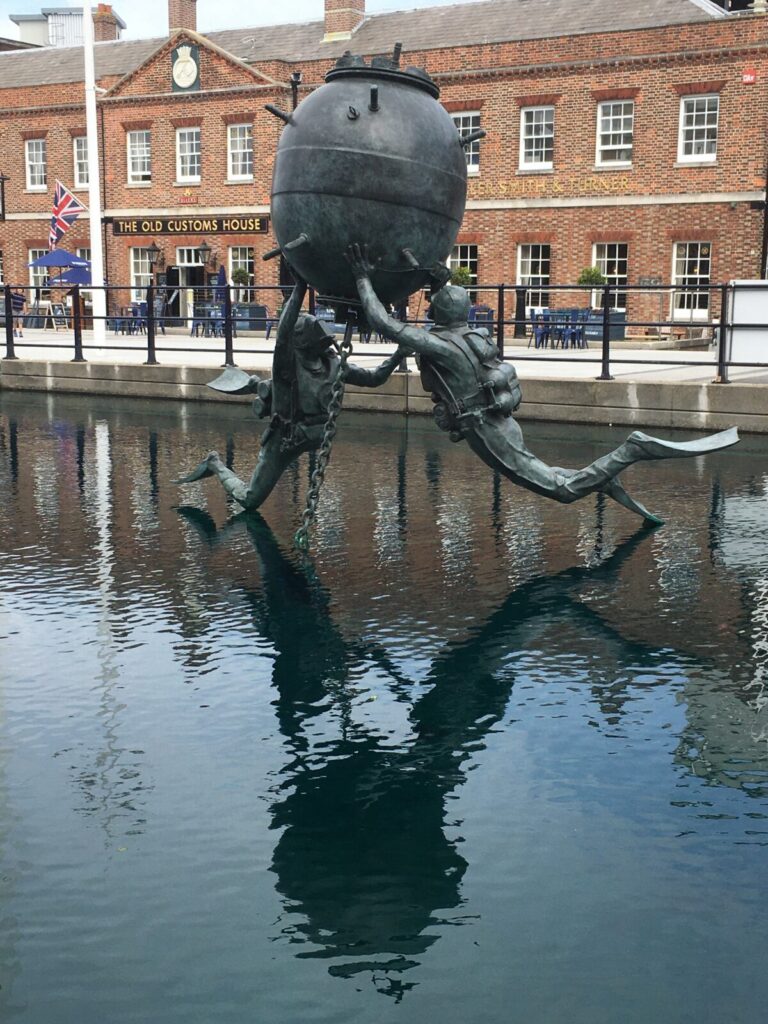
“…unfailing courage, endurance and resources in H.M. Trawlers, Drifters and Minesweepers in their hard and perilous task of sweeping the seas clear of enemy mines, and combating submarines.”
I am, as always, deeply indebted to those who have helped me cover the story of my dives on the Elk and to go some way to recount the heroism of those involved in Mine Warfare!
The excellent photos of HMT Elk by Peter Rowlands, the archive photos & research prompts provided in the late Peter Mitchell’s (RIP) dive recollections and Simon Balderson of Lincs Inspire for the one really good photo of the Elk in her Grimsby Trawling days lastly to the Ships Project & Vernonlink for a great deal of background information on the Elk, Mine warfare and Minefield Clearance
